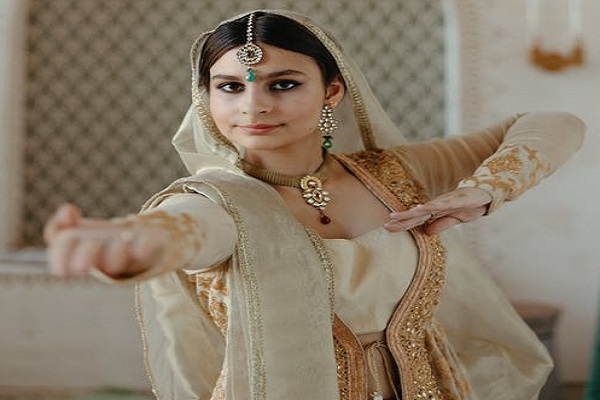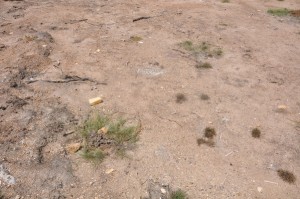Dances
Bharatanatyam is the oldest and most popular dance in India, originating in the Tanjor district of Tamil Nadu. This classical dance performed by women, was originally performed in temples for religious purposes. Of the 40,000 temples in Tamil Nadu, at least 33,000 are said to be between 800 and 2,000 years old. Originally, the dancers wore only a loincloth and were adorned with jewellery on the upper parts of the body. The dance represented the merging of the divine that was channelled through the host body.
Chakay koothu was introduced to Kerala by Aryan immigrants and was performed exclusively by members of the Chakair caste. To begin with, the dance was staged inside temples and was only for the Hindu higher castes. Cymbals and drums were the only instruments that accompanied this form of dance.
Chhau is a dance that combines martial arts, combative training and folk traditions. The dance comes in three different styles, and is shrouded in mystery. It is a dance that uses many different elaborate masks during performances. This dance form originated in West Bengal and is the most recent dance form to be included in the list of classical dances. https://www.youtube.com/watch?v=u3YLq7CVavc
(i) Seraikella Chhau flourished under royal patronage and assumes a vigorous warlike character, and is suitable only for male dancers. Not only did kings and princes patronise the dance, they were also performers, teachers and mask makers.
(ii) Purulia Chhau is influenced by Vedic literature, Hinduism and martial folk-lore. Its only message is the triumph of good over evil.
(iii) Mayurbhanj Chhau has highly developed movements but without masks. It is considered to be a fusion between the earthly Indian movements and the flying springing elevations of western dance.
Kathak means a story teller, and developed as a dance form in which a solo dancer told and interpreted stories from mythology. Originality, it was performed in temples by male dancers, but nowadays, both men and women perform Kathak. The dance is also used in the performance of contemporary events and historical dramas. It originated in Uttar Pradesh and is another one of the classical dances. https://www.youtube.com/watch?v=Fz_Tpp0q73A
Kathakali, another classical dance, means a story play or dance drama. It’s an extremely colourful dance form with extravagant costumes, flowing scarves, ornaments and crowns. The dance emphasises the movements of the eyeballs, the eyebrows, the cheeks, the nose and the chin. The characters of Kathakali never speak; instead the performers use a lexicon of highly developed hand gestures (mudras) that enhance the facial expressions and unfold the texts of the drama. It also incorporates elements of yoga. Traditionally, men played the female roles; however, women have now embraced the Kathakali. This classical dance originated in Kerala. https://www.youtube.com/watch?v=twRbAWmEwLQ
Krishnattam is presented for eight successive nights and unfolds the entire story of Lord Krishna. The style of dance is similar to Kathakali. https://www.youtube.com/watch?v=UhQUC09_ywc
Kuchipudi had its inception in the 17th century and is also one of the nine classical dances. Like Kathakali, it is also a dance-drama tradition, and derives its name from the village of Kuchipudi, in the southern state of Andhra Pradesh. It is a solo dance performed women, although it was traditionally performed by men enacting female roles. This dance begins in ritualistic style by the sprinkling of holy water and the burning of incense; afterwards, the goddess of wealth and learning is invoked. This dance drama, tells the story of Satyabhama, the wife of the god Krishna, who although charming, was very jealous. https://www.youtube.com/watch?v=zrWogEEvZMs
Koodiyattam is the oldest surviving link with ancient Sanskrit theatre and was traditionally held in special theatres attached to the temples. Female dancers begin by singing songs to invoke the spirit for inspiration or to witness the performance. Then chanting stories within stories are accompanied with flashbacks and improvisation and singing. Usually, the selected play is performed over several days. https://www.youtube.com/watch?v=6QqhCDW0epw
Manipuri dances originated from the north-eastern state of Manipur. It is a group dance with colourful costumes and gentle movements that create a hypnotic impact. This classical dance is influenced by the religious movement of Vaishnavism, the worship and acceptance of Lord Vishnu, one of the principle deities of Hinduism. This dance is performed on special occasions and festivals. https://www.youtube.com/watch?v=u5l6FX-LkaA
Mohiniyttam was developed in Kerala. It is a graceful dance performed by women. Mohini means enchantress. The dancer is dressed in a white sari with a gold border and gold jewellery and with enchanting movements, she epitomises the image of a beautiful maiden. There are about 80 steps and 24 hand gestures in this classical dance. https://www.youtube.com/watch?v=m_avP6toESU
Odissi is the oldest form of classical Indian dance, based on archival evidence. Odissi has a close relationship with the temples and the temple structures. Tribhangi (the neck, waist and knee), or the three body bend, characterises this dance form. It has a vast range of sculptural body movements that gives the impression that the sculptures are coming to life. This dance originated in Odisha. Cave reliefs, dating back to the first century BCE, depict dancers performing in the Odissi style. https://www.youtube.com/watch?v=52bscmW8x80
Ottan Thullal is a solo performance, and because of its appeal to the masses, it is known as the poor man’s Kathakali. It is a dance that highlighted the distinctions between the social classes, and the whims and weaknesses of the rich and the great. https://www.youtube.com/watch?v=8SyBvHzDRY8
Sattriya originated in Assam and dates back to antiquity, however the modern form of the dance stemmed from the Krishna centred monasteries in Assam during the 15th century. The dance was originally performed by monks as part of their daily rituals, however, now it is performed by both male and female dancers. https://www.youtube.com/watch?v=eol86xyJb84
Yaksha Ganais is about 400 hundred years old and is a mixture of dance and drama based on the Hindu epics. https://www.youtube.com/watch?v=_64vx6Ae0Wo
Dravidians in Guyana
India has over 2,000 different ethnic groups, and one sixth of the world’s population. The common belief up until recently was that the original people of India were Dravidians, who founded the Happaran/Mohenjo-Daro civilisation. Nowadays, it is thought that the indigenous Adivasi are the original inhabitants of southern India, but that Dravidians were the majority population before the second millennium. Today, in southern India, in areas such as: Andhra Pradesh, Karnataka, Kerala, Puducherry, Tamil Nadu and Telangana, about 28% of the Indian population are Dravidian.
Beginning in 1838, up until the time that indenture-ship officially ended in 1920, the majority of people that left India for Guyana were from the southern areas and called Madrassis’ irrespective of the areas that they came from. This misconception came about because the British East India Company, who was already in India trading in spices and precious stones, established an important colony in 1639, in Madras.
The colony expanded quickly and covered all of Tamil Nadu, as well as parts of Andhra Pradesh, Karnataka, Kerala and the southern part of Odisha. Because the British could not pronounce the various state names, all of the people from Madras and the surrounding areas were called Madrassis’ despite the fact that they also spoke different languages. Many of the people that went to Guyana as Indentured labour were from southern India.
The most popular classical dances that remain in Guyana today that originated in India are: Bharatanatyam, Kathak and Odissi. After independence, India reorganised its states based on linguistic patterns. Thus, each state reclaimed its individual identity. And Madras State was renamed Tamil Nadu (Tamil country) in 1969. Moreover, the term Madrassi is outdated and now regarded as a derogatory term.



